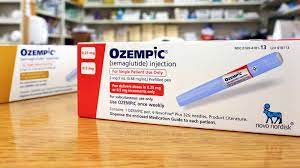Recovering from angioplasty requires a combination of medical care and lifestyle changes. One of the most crucial aspects of a successful recovery is adopting a heart-healthy diet. After undergoing angioplasty, the arteries that supply blood to the heart are often widened, and maintaining their health becomes paramount. In this article, we will explore essential tips for embracing a diet that supports heart health and aids in the recovery process.
Understanding Your Dietary Needs Post-Angioplasty
The Role of Diet in Recovery
Diet plays a significant role in post-angioplasty recovery. A heart-healthy diet helps control blood pressure, manage cholesterol levels, and reduce inflammation, all of which contribute to better cardiovascular health.
Balancing Nutritional Intake
Creating a balanced diet post-angioplasty involves consuming a variety of nutrients. Focus on whole foods rich in vitamins, minerals, and antioxidants, such as fruits, vegetables, lean proteins, whole grains, and healthy fats.
Key Dietary Guidelines
Limiting Sodium Intake
Reducing sodium intake is crucial in preventing fluid retention and managing blood pressure. Opt for fresh foods and herbs to flavor meals instead of relying on salt.
Choosing Heart-Healthy Fats
Incorporate unsaturated fats into your diet, like those found in avocados, nuts, seeds, and olive oil. These fats help improve cholesterol levels and support overall heart health.
Increasing Fiber Consumption
Fiber-rich foods, such as whole grains, legumes, and vegetables, aid in digestion, regulate blood sugar levels, and promote a healthy heart.
Prioritizing Lean Proteins
Opt for lean protein sources like fish, skinless poultry, and plant-based proteins like beans and lentils. These choices are low in saturated fat and provide essential nutrients.
Emphasizing Omega-3 Fatty Acids
Omega-3 fatty acids, found in fatty fish like salmon, walnuts, and flaxseeds, have anti-inflammatory properties and can help reduce the risk of heart disease.
Monitoring Fluid Intake
While staying hydrated is important, excessive fluid intake can strain the heart. Consult your healthcare provider for personalized fluid recommendations.
Implementing Practical Dietary Changes
Portion Control
Maintaining a healthy weight is essential for heart health. Portion control helps prevent overeating and supports weight management.
Meal Planning
Plan your meals ahead of time to ensure you’re making heart-healthy choices. Prepare balanced meals that include a variety of nutrients.
Reading Food Labels
Become adept at reading food labels to identify hidden sodium and unhealthy fats. Opt for products with lower sodium and trans fat content.
Cooking Methods
Choose cooking methods that retain nutrients and minimize the use of unhealthy fats. Grilling, baking, steaming, and sautéing are great alternatives to frying.
The Importance of Regular Physical Activity
Complementing Diet with Exercise
Physical activity goes hand in hand with a heart-healthy diet. Regular exercise strengthens the heart, improves circulation, and helps with weight management.
Consultation with Healthcare Providers
Before starting any exercise regimen, consult your healthcare provider to determine the most suitable activities based on your health condition.
Conclusion
Adopting a heart-healthy diet after angioplasty is a vital step toward recovery and long-term cardiovascular wellness. By making thoughtful dietary choices, you can support your heart’s health, manage risk factors, and enhance your overall quality of life.








